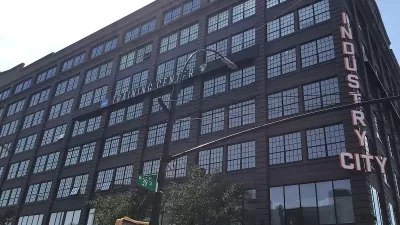The argument that increased supply of urban housing will lower prices is rapidly being disproved by successive waves of gentrification throughout American cities. Stephen Smith offers a considered analysis of the economics behind this dynamic.
For the original, and often poor residents of newly gentrifying neighborhoods, the market remedy of increasingly supply doesn't make anything cheaper. Rather, they find themselves pushed out by the increased cost of housing, and amenities.
Smith believes that price increases respond to new amenities along an S-curve. "The first 100-unit rental building with the neighborhood's first high-quality grocery story is a huge boon, but the hundredth glass tower with the neighborhood's fifth bank won't even be noticed. It's at this point that the price-lowering effect of dumping new units on the market will outweigh the price-raising effect of the new amenities – in other words, prices will start to fall."
The problem is that once a neighborhood has all its amenities, new housing construction is ground to a halt by a NIMBY shield and any remaining original homeowners who are unlikely to allow their home values to fall.
FULL STORY: Does Urban Growth Have To Mean Gentrification

Alabama: Trump Terminates Settlements for Black Communities Harmed By Raw Sewage
Trump deemed the landmark civil rights agreement “illegal DEI and environmental justice policy.”

Study: Maui’s Plan to Convert Vacation Rentals to Long-Term Housing Could Cause Nearly $1 Billion Economic Loss
The plan would reduce visitor accommodation by 25% resulting in 1,900 jobs lost.

Planetizen Federal Action Tracker
A weekly monitor of how Trump’s orders and actions are impacting planners and planning in America.

Wind Energy on the Rise Despite Federal Policy Reversal
The Trump administration is revoking federal support for renewable energy, but demand for new projects continues unabated.

Passengers Flock to Caltrain After Electrification
The new electric trains are running faster and more reliably, leading to strong ridership growth on the Bay Area rail system.

Texas Churches Rally Behind ‘Yes in God’s Back Yard’ Legislation
Religious leaders want the state to reduce zoning regulations to streamline leasing church-owned land to housing developers.
Urban Design for Planners 1: Software Tools
This six-course series explores essential urban design concepts using open source software and equips planners with the tools they need to participate fully in the urban design process.
Planning for Universal Design
Learn the tools for implementing Universal Design in planning regulations.
Caltrans
Smith Gee Studio
Institute for Housing and Urban Development Studies (IHS)
City of Grandview
Harvard GSD Executive Education
Toledo-Lucas County Plan Commissions
Salt Lake City
NYU Wagner Graduate School of Public Service





























